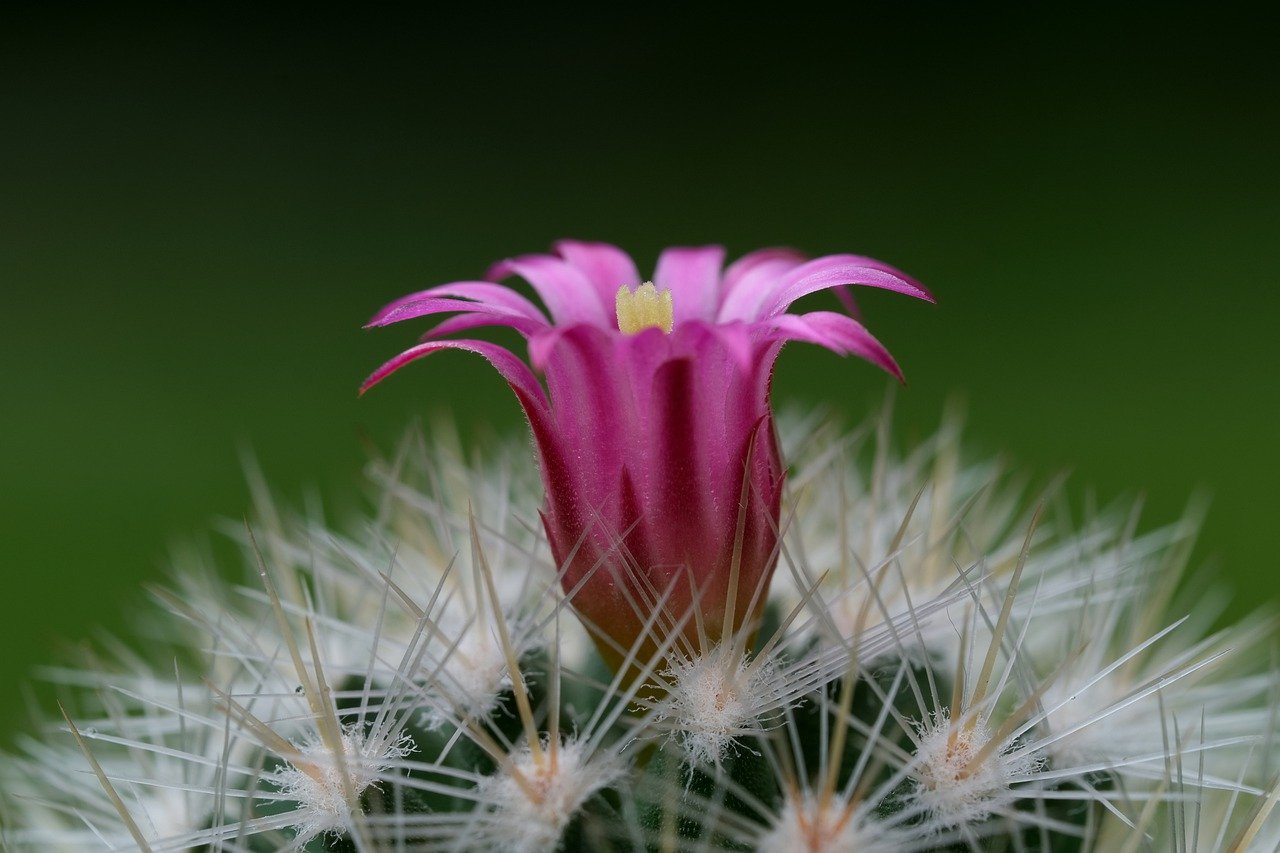Beginning your adventure into plant motherhood may be both exhilarating and intimidating, particularly when selecting the correct types. Cacti are a good choice for novices because of their low maintenance requirements and distinctive appearance. In this post, we’ll look at ten robust cactus kinds ideal for first-time plant owners and important maintenance suggestions to ensure their success.
8 Simple Cactus Varieties Ideal for First-Time Plant Owners
The Snake Plant
The Snake Plant, known as Sansevieria or Mother-in-Law’s Tongue, is well-known for tolerating various environments. This plant has thick, erect leaves, usually variegated with green and yellow tones.
Care Tips:
- Snake plants like low light but can survive intense, indirect light.
- Water: Allow soil to dry completely between waterings. Overwatering can cause root rot.
Christmas Cactus
The Christmas Cactus (Schlumbergera) is a popular choice because of its magnificent, colorful blossoms, which bloom over the holiday season.
Care Tips:
- Prefers bright, indirect light.
- Water the soil when the top inch feels dry. This cactus prefers more moisture than its desert-dwelling siblings.
Bunny Ears Cactus
The Bunny Ears Cactus (Opuntia microdasys) is distinguished by its flat pads that resemble bunny ears, making it a humorous addition to any plant collection.
Care Tips:
- Light: Place near a sunny window for optimal growth.
- Allow the soil to dry completely between waterings; this cactus is drought-tolerant.
Golden Barrel Cactus
The Golden Barrel Cactus (Echinocactus grusonii) is known for its spherical shape and vivid yellow spines, which add visual flair.
Care Tips:
- Light: Requires direct sunshine to retain form and color.
- Optimal settings include a dry climate and infrequent water usage.
Fishbone Cactus
The Fishbone Cactus (Epiphyllum anguliger) is an excellent choice for first-time owners, with its distinctive, zig-zag-shaped leaves offering character to any setting.
Care Tips:
- Light: Prefers indirect sunshine but may tolerate low light.
- Allow the top layer of soil to dry in between waterings.
Zebra Cactus
The Zebra Cactus (Haworthiopsis fasciata) is distinguished by its vibrant green leaves with white stripes. This little succulent is ideal for beginners.
Care Tips:
- Light: Prefers bright, indirect light but may take direct sunlight.
- Water thoroughly but infrequently, allowing the soil to dry fully.
Hedgehog Cactus
The Hedgehog Cactus (Echinopsis) produces brilliant pink, red, or yellow flowers and thrives in sunny conditions, making it an ideal centerpiece.
Care Tips:
- Requires full sun to flower wonderfully.
- Water lightly, as this cactus prefers to dry completely between watering.
Moon Cactus
The Moon Cactus (Gymnocalycium mihanovichii) has a colorful top grafted onto a green base, resulting in a striking and distinctive appearance.
Care Tips:
- Prefers bright, indirect lighting.
- Allowing the soil to dry slightly between waterings promotes maximum health.
Care Tips to Keep Your Cacti Thriving
Light Requirements for Each Cactus
Understanding your cactus’ light requirements is critical for their growth. Most cacti like bright light, although some may tolerate low light levels. Place your cactus where it can get enough sunshine, but avoid extended exposure to direct sunlight, which can cause sunburn.
Watering Schedule: Finding the Right Balance
Watering is essential for cactus care; the usual rule is to use it minimally. Allow the soil to dry completely between waterings, normally occurring every two to three weeks, depending on humidity and temperature.
Soil Selection
Using the appropriate soil mix is critical. Water retention and root rot can be avoided using well-drained cactus or potting soil mixed with sand or perlite.
Common Pests and How to Treat Them
Look out for typical pests such as mealybugs and spider mites. Remove them with a cotton swab soaked in alcohol or a mild insecticide soap.
Propagation Made Simple: Expanding Your Cactus Collection
Propagation is one of the most enjoyable aspects of caring for cacti. It allows you to build your collection and provides a fun and interesting method to interact with your plants. Here’s how to propagate some of the cacti listed above:
- Cuttings: For cacti such as Bunny Ears and Fishbone Cactus, remove a healthy pad or segment and allow it to dry for a few days. Once the cut end has been calloused, plant it in well-drained soil. Water sparingly and watch for fresh growth.
- Offsets: Many cacti, like the Golden Barrel and Zebra Cactus, produce offsets, or “pups.” Separate these from the parent plant with a clean, sharp instrument. Allow the cut areas to dry completely before replanting in suitable soil.
- Seeds: If daring, you can start a cactus from seeds. Make careful to follow the germination guidelines for the cactus you have. Keep the soil moist and warm enough for the seeds to germinate successfully.
Propagation can be done any time during the growing season but is most common in the spring and summer to ensure your plants thrive in ideal conditions. With some patience, you’ll have new cactus babies in no time!
Conclusion
Caring for cacti is a rewarding experience that can ignite a lifelong enthusiasm for plant parenting. Their durability, distinct appearance, and low-maintenance requirements make them ideal partners for first-time plant owners. Each cactus variety discussed in this article has a unique personality, adding character and beauty to your environment.
